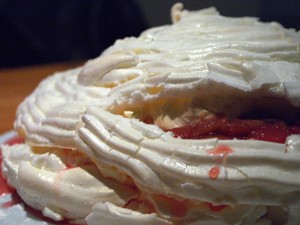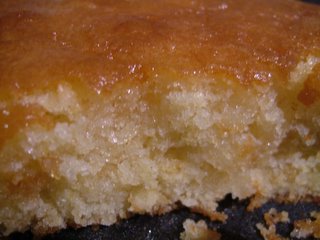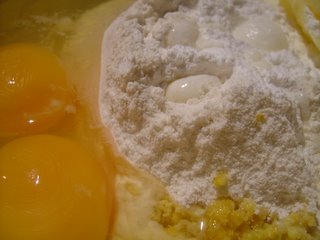 For the last couple of weeks, I’ve been blogging from a Booklet laptop lent to me by the friendly folks at Nokia, who saw me mention on Twitter that my own laptop had died horribly. (It was a long and sad process, the worst part being the fortnight before it gave up the ghost completely, over which period it tried its damnedest to barbecue any lap it was put on.) The Booklet goes back to Nokia today, and I’ll miss it; while the screen’s a bit too small to edit photos and work through piles and piles of text on optimally, its portability has been an eye-opener, and the 3-G-ness is brilliant – it’s been lovely to work on a machine that’s small enough for a handbag, that fits onto one of those pathetic trays on trains, and that I can easily manage in one hand while waving a wooden spoon in the other. Adieu, little Booklet. I shall miss you.
For the last couple of weeks, I’ve been blogging from a Booklet laptop lent to me by the friendly folks at Nokia, who saw me mention on Twitter that my own laptop had died horribly. (It was a long and sad process, the worst part being the fortnight before it gave up the ghost completely, over which period it tried its damnedest to barbecue any lap it was put on.) The Booklet goes back to Nokia today, and I’ll miss it; while the screen’s a bit too small to edit photos and work through piles and piles of text on optimally, its portability has been an eye-opener, and the 3-G-ness is brilliant – it’s been lovely to work on a machine that’s small enough for a handbag, that fits onto one of those pathetic trays on trains, and that I can easily manage in one hand while waving a wooden spoon in the other. Adieu, little Booklet. I shall miss you.
So then. Pavlova. In the dark days of the early 80s, I was set a piece of homework for our “finding out” class, where I was meant to write a short essay on Anna Pavlova. Nobody in the family knew anything more about her than that she was a 1920s ballerina, and so I ended up submitting an essay about meringue instead, which, happily, was something that everybody at home was more than educated about. The Pavlova is a New Zealand dessert which was named after the dancer in the 1920s (a period when naming a dish after a celebrity was a signal honour – like Peaches Melba and Melba Toast, Omelette Arnold Bennett, Eggs Benedict and other eponymous dishes). Being a reasonably easy recipe which looks so handsome, the Pavlova, with its ballet skirt of meringues, is a favourite at Christmas in NZ – I wish Christmases here were sunny, so we could do away with the leaden puddings and have meringue instead. Tart fruits are best as a filling – I’ve made a lemon cream using some home-made lemon curd (it’s quick to make, and it’s a good way to use up the egg yolks, but shop-bought curd will do the job just as well) and some roast rhubarb from my friend’s garden. I’ve used Polish cherry squash to pink up the rhubarb – if you can’t find any, use grenadine or another reddish cordial.
The inside of a proper Pavlova reaches that lovely marshmallowy texture thanks to the addition of a little vinegar and cornflour to the meringue – when you have meringue, which magically turns itself from yellowish, wet egg-whites into glossy clouds, then into a simultaneously crisp and chewy nest, who needs molecular gastronomy?
You’ll need:
Meringue
2 tablespoons melted butter
8 egg whites
330g caster sugar
1 teaspoon spirit vinegar
2 teaspoons cornflour, plus extra for dusting
Filling
450ml double cream
100g lemon curd
5 fat stems rhubarb
2 tablespoons cherry cordial
200g caster sugar
Preheat the oven to 120°C (250°F). Lay greaseproof paper out on two baking trays, and brush each with melted butter. Dust the buttered paper with cornflour and shake off any excess – this will stop the Pavlova from sticking.
Beat the egg whites with an electric whisk or stand mixer, adding 330g sugar a little at a time, until they form soft, glossy peaks. Add the cornflour and vinegar to the mixture, and beat in gently.
Fill a piping bag fitted with its largest nozzle with the meringue, and pipe in a spiral straight onto the floured paper, starting in the centre, going round and round until you have a solid circle of meringue measuring about 7 inches in diameter. Be careful to leave some room around the meringue, which will swell as it cooks. Repeat on the other sheet of floured paper. You’ll have a little meringue left – use this to pipe a wall of meringue around the edge of one of the circles – this will be the bottom piece, and the lip of meringue will help to hold the filling in place.
Bake for 30 minutes, then turn the heat down to 100°C (210°F). Bake for another 40 minutes – the meringue should now be nice and dry, and should crack when you press it gently. Turn the oven off and cool the meringue in the oven with the door cracked open.
Once the meringue is cool, it can be covered and kept, without the filling, in the fridge – you can also freeze it successfully at this stage.
To prepare the filling, chop the rhubarb stems into pieces about an inch long, and put them in a large roasting tin, sprinkled with the sugar and cordial. (Use grenadine or another red cordial if you can’t find cherry – mine was from the local Polish shop.) Roast at 170°C (340°F) for 20 minutes, until tender and collapsing. Remove to a bowl and chill.
Whip the cream until it forms stiff peaks, and fold the lemon curd in with a spatula. Chill until you are ready to serve.
To assemble the Pavlova, spread half the lemon cream onto the base piece of meringue, leaving a bit of a hollow in the middle so you can really heap up the rhubarb. Spoon over the rhubarb (you won’t use all the juice, but it’s delicious, so keep it to one side to slurp at later), dollop the rest of the cream on top, and put the meringue lid on. Serve immediately.


